CLIMAX, Minnesota — The drought of 2021 marks 150 years for the Larson family spring wheat harvest. It’s an early, fast harvest in northwest Minnesota, the biggest region for the crop in the state.
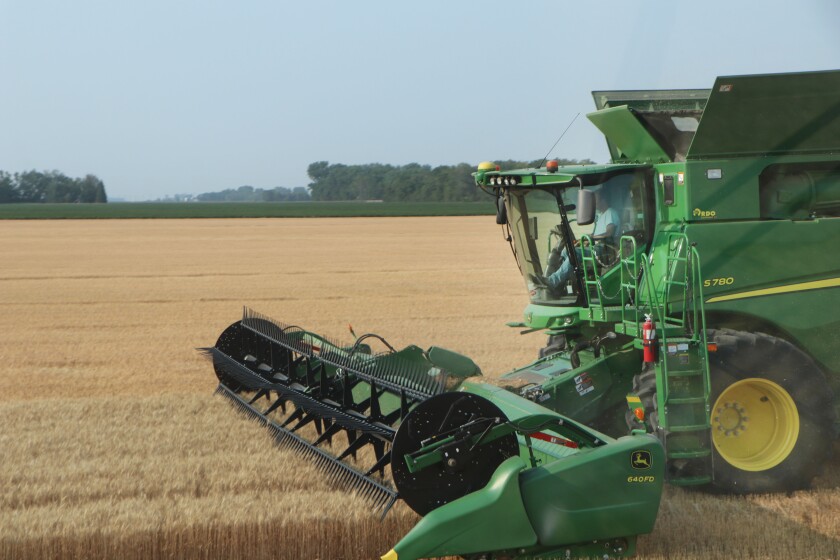
The National Agricultural Statistics Service on Aug. 2, 2021, reported that 32% of the state’s spring wheat was harvested, up from 8% the previous week. Minnesota’s wheat was rated 12% in “good to excellent” condition categories on Aug. 2, up from the 9% good on July 26 and from 15% on July 19.
Today’s set of Larson operators — Ben, 47, and Matt, 45 — go under the “B&M Farms” at Climax, Minn. They are in Polk County — traditionally the state’s No. 1 spring wheat producing county, where 15 million bushels in 2019 and 2020.
ADVERTISEMENT
2021’s wheat story
The families’ farm now includes 6,500 acres in all — 2,500 acres of wheat, 2,100 acres of soybeans and 1,900 acres of sugarbeets. The majority of Larson land is in Polk County, with some in Norman County, Minn., and Traill County, across the nearby Red River in North Dakota.

The wheat crop is about half the crop they’d hoped for, because of drought. The Larsons had a very dry fall.
A bare winter.
A dry spring.
They started planting spring wheat April 1 and finished around April 20. Since planting, they’ve had a total of less than 3 inches of rain, in very small increments.
ADVERTISEMENT
The wheat crop here has fared better than the Larsons expected.
Maybe it lived off of subsoil moisture from the tough harvest in 2019, when some of the region’s crops went unharvested due to excessive moisture and early snows. “That’s the only thing that can explain it — got to be subsoil” moisture, Ben said.
Ben said that perhaps the wheat survived because they didn’t “plant wet.” Wheat has a “tendency to develop a better root structure” if it has to reach deeper for moisture, right off the bat.
The Larsons plant three varieties of WestBred wheat, selected for “standability,” and yield potential, good protein and quality traits. They shoot for 80 bushels per acre or more on this rich, clay-based Red River Valley soil.

“We put a lot of inputs into our wheat to try to return the best we can,” Ben said. “We always need timely rains to have a good crop, and we haven’t gotten any. Our expectations kept going down all the way up ‘til harvest, so …”
ADVERTISEMENT
The Larsons started harvesting wheat July 25, 2021, and finished Aug. 2, 2021. That puts it at “one of the earliest harvests.”
Quality is good. They keep samples from each field. They took the early samples to the elevator, where they ranged from 14% protein to 15.8%.
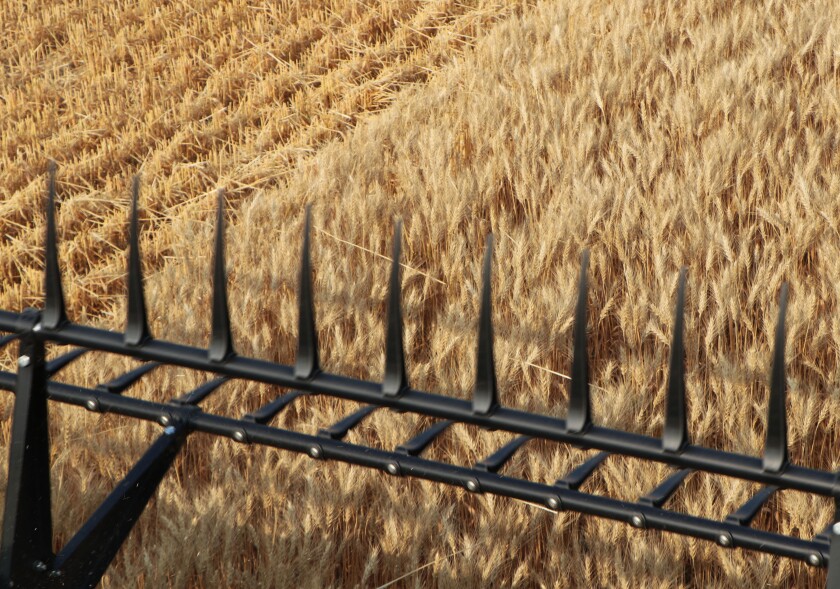
Some fields are better than others, but overall yield is undoubtedly down.
“It’s probably half of what we normally would expect,” Ben said. He said the “40-plus range is covering most of it.”
Ben has heard rumors that elevators might actually discount for excessively high protein levels, because all of the spring wheat crops have it. He says that’s happened before. (Wheat marketing experts say high protein levels are still welcome to blend with low-protein southern winter wheat crops.)
The Larsons sometimes uses futures or basis contracts in their marketing. This year they plan to simply put the grain in the bins and wait for markets to react.
ADVERTISEMENT
River of wheat
In 2005, Agweek visited with Larson family for a “Salute to Agriculture” cover story, published in the Grand Forks Herald. The story followed the Larsons through a full season, including the wheat harvest.
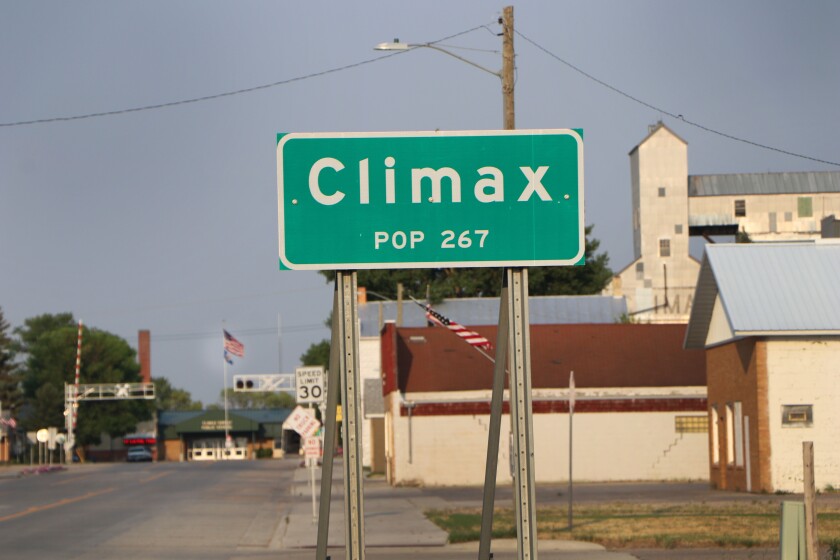
Arlan was 57 then. He ran under the “A. Larson Farms” banner, flanked by his two young sons. The farm was 2,700-acres. In that story, Arlan and his parents told about how their ancestors had raised wheat here since 1871, under ancestral family names of Jevning and Neil.
Arlan’s turn came in 1962, when he started farming with his father, Elmer. Arlan farmed with a brother, Owen, until they split into their own nuclear family operations.
Today, Arlan and wife, Dana, have phased out of management, handing the reins to Ben and Matt. This generation operates a farm that is nearly three times the size it had been, aided by three three full-time seasonal employees.
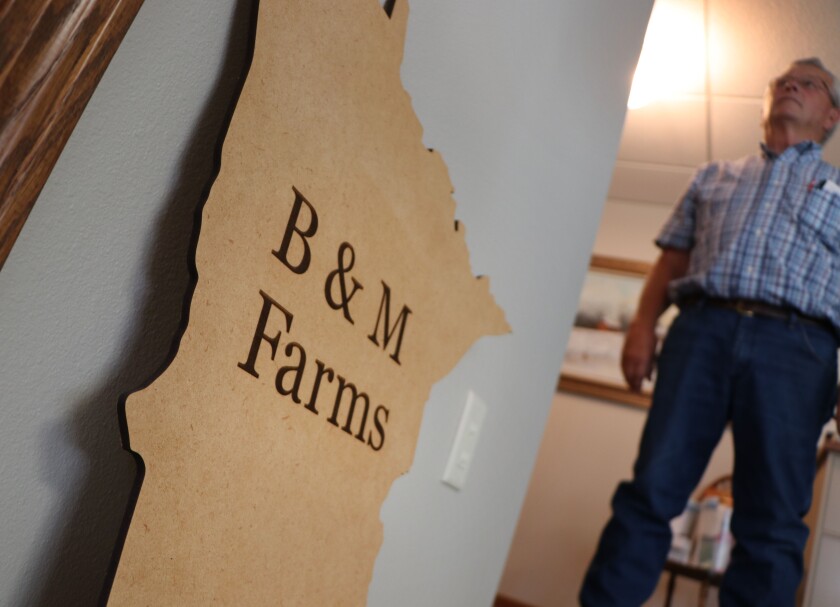
ADVERTISEMENT
“I kind of set the stage for them, and got the ball rolling, and now it’s their ball to roll,” Arlan said, of the farm transition. Arlan enjoys the family’s lake place, but the farm — something he worked all of his life for — is still his main interest. He’s happy to fill in.
Matt and his wife, Angie, have two sons. Wyatt, 16, Mason, 14, are active in sports and other activities. Matt said he appreciates working with the family, including his sons as they’re available.
Ben and his wife, Toscha, have brought their son, Jacob, 19, into the operation. Jacob graduated high school in 2020. He put off higher education for a year due to COVID-19 but will study ag management at Northland Community and Technical College in East Grand Forks, Minnesota, this fall. Their daughter, Ava, is 15.
Jacob was age 3 when Agweek last showed up.

The wheat harvest phase of the story included a photo of Jacob, standing on the “buddy seat, focused intently on the harvest machines in the distance, oblivious to the fact that he’d selected two right-foot rubber boots from different pairs," the caption said. A framed print of that photo hangs on the B&M Farms’ office wall. Another copy hangs on Jacob’s bedroom wall. Asked when he realized he wanted to farm, Jacob answered that he was very young — for sure since that photo was taken.
Always building
After the wheat, the Larsons focus on the soybeans and sugarbeets.
ADVERTISEMENT
“Unless we get some rain, I don’t have any great expectations for that crop,” Ben said, of the beans. Rains into August and September could turn things around.
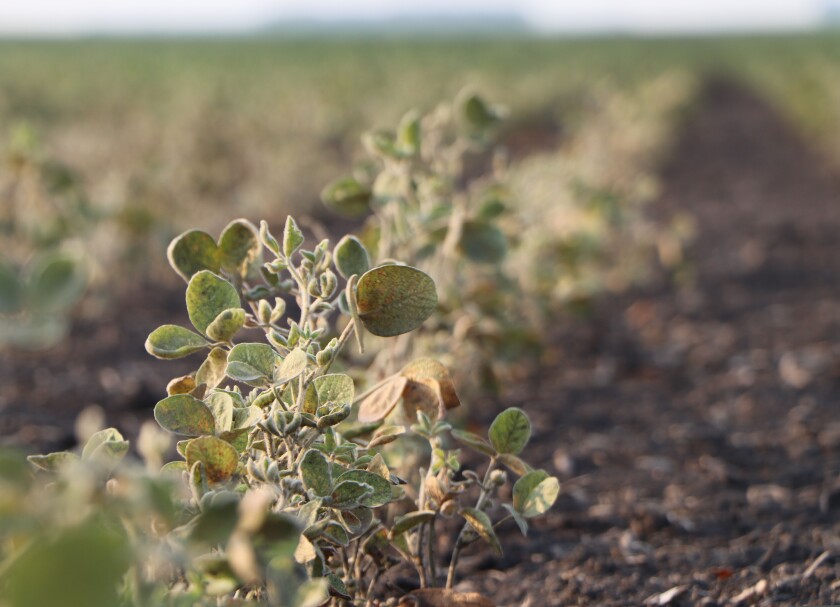
Sugarbeets are “holding on, but they need water.” Prepile beet harvest is scheduled to start sometime between Aug. 17, 2021, and Aug. 24, 2021.

But the 2021 harvest is only a small slice of an ever-building future.
“The numbers are getting bigger every year,” Ben said. “It takes a lot to put the crop in the ground, purchase machinery. The inputs: everything gets more expensive every year. The transition to the next generation — if they choose to do that — will be a challenge.” He wants it to be available to them, if they choose.
Matt said technology has changed so much since 2005, and will keep changing.
“Combines talk to each other,” he said. “Auto-steer, yield-monitoring, being able to watch all of the equipment on your phone. High-speed planters, you can ‘singulate’ every seed going 9 mph.”
He expects more change ahead — “more user-friendly, integrated through the web with the equipment, and the amount of information you can extract from it.”
Qualified labor becomes more important. “Everybody’s talking about autonomous vehicles, but we’ll see,” Ben said. “Never say never, I guess.”
He is unafraid.
“Someone has to program and oversee them, so that will have to be a farmer,” he said.
Some challenges are eternal and trump everything.
“Right now, Mother Nature,” he said. “It’s something you can’t control.”
Asked whether farmers will be able to adapt, Ben answers without hesitation.
“They’ll have to,” he said, with a hint of a smile.
A wheat farm’s 150 years
1871 — Arlan Larson’s great, great grandparents from the Jevning family settle on land that later would become part of B&M Farms.
1876 — Ole and Ingeborg Jevning start out as “squatters,” building their first “hut” home in 1876. (In 1976, a century later, the house is dismantled and moved to a historical site in Crookston, Minnesota.)
1878 — The Jevnings get their first land papers from a land office in Detroit Lakes, Minnesota.
1941 — Elmer and Marion (Neil) Larson buy a milk separator and start a dairy while dealing with World War II machinery restrictions. Elmer’s brother, Joe Larson, returns from service after the war. Veterans have priority in getting new machinery and the brothers become partners.
1961 — Elmer Larson sells the dairy cows and start an 80-acre sugar beet contract with then corporate American Crystal Sugar Co.
1964 — Arlan Larson starts renting land even before his 1966 graduation. He graduates in business administration from what is now Minnesota State University-Moorhead. The farm is about 500 acres.
1972 — Arlan and Dana purchase some of the Jevning land.
1973 — Arlan purchases his first American Crystal Sugar Co. cooperative stock for $105 an acre.
1974 — Ben Larson is born. Wheat goes to $6.24 per bushel in the wake of a Russian wheat purchase.
1980s — Brothers Ben and Matt start running machinery, starting with five-bottom plows.
1987 — Drought hits the Larson farm.
1992 — Larsons plant soybeans for the first time.
1990s — Alran invests in agricultural processing cooperative start-ups, but they don’t match results from American Crystal.
1993 — “Scab” (Fusarium head blight), hits the family’s wheat and barley crops through 1998.
1996 and 1998 — Ben and Matt join the farm full-time, respectively, as they graduate from North Dakota State University in ag systems management. In 1998, they form “B&M Farms,” the name they use today.








